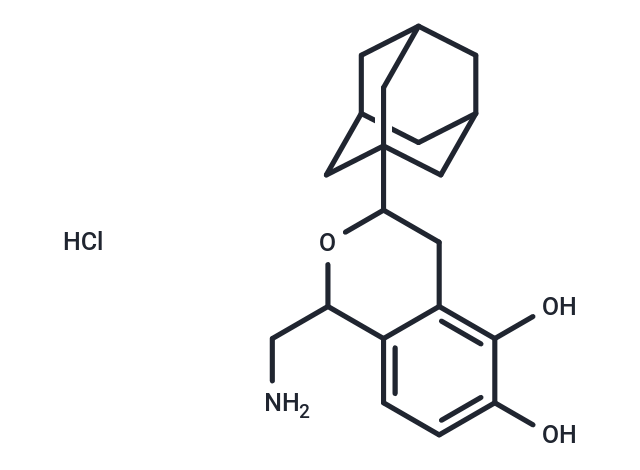Shopping Cart
Remove All Your shopping cart is currently empty
Your shopping cart is currently empty
A 77636 hydrochloride is a potent, orally active, selective and long acting dopamine D1 receptor agonist (pKi=7.40; Ki=39.8 nM). A 77636 hydrochloride shows antiparkinsonian activity. A 77636 hydrochloride is functionally inactive at dopamine D2 receptor.

| Pack Size | Price | USA Warehouse | Global Warehouse | Quantity |
|---|---|---|---|---|
| 1 mg | $97 | In Stock | In Stock | |
| 5 mg | $228 | In Stock | In Stock | |
| 10 mg | $333 | In Stock | In Stock | |
| 25 mg | $561 | In Stock | In Stock | |
| 50 mg | $789 | In Stock | In Stock |
| Description | A 77636 hydrochloride is a potent, orally active, selective and long acting dopamine D1 receptor agonist (pKi=7.40; Ki=39.8 nM). A 77636 hydrochloride shows antiparkinsonian activity. A 77636 hydrochloride is functionally inactive at dopamine D2 receptor. |
| In vivo | A-77636 (0.1-1 mg/kg) exerts a suppressant effect on food intake in male hooded rat, due principally to a reduction in meal size and duration[3]. |
| Synonyms | A77636 hydrochloride |
| Molecular Weight | 365.89 |
| Formula | C20H28ClNO3 |
| Cas No. | 145307-34-2 |
| Smiles | Cl.NCC1OC(Cc2c(O)c(O)ccc12)C12CC3CC(CC(C3)C1)C2 |
| Relative Density. | no data available |
| Color | Yellow |
| Appearance | Solid |
| Storage | Powder: -20°C for 3 years | In solvent: -80°C for 1 year | Shipping with blue ice/Shipping at ambient temperature. | ||||||||||||||||||||
| Solubility Information | DMSO: 3.66 mg/mL (10 mM), Sonication is recommended. H2O: soluble | ||||||||||||||||||||
Solution Preparation Table | |||||||||||||||||||||
DMSO
| |||||||||||||||||||||
| Size | Quantity | Unit Price | Amount | Operation |
|---|

Copyright © 2015-2026 TargetMol Chemicals Inc. All Rights Reserved.